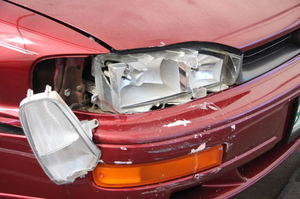In auto accident litigation, our Lehigh Acres injury lawyers know it can be helpful to the plaintiff’s case if it can be shown the defendant driver was engaged in some violation of traffic law at the time of the crash.

However, as the recent case of Estate of Edmund M. Carman v. Tinkes, et al. reveals, it isn’t the only factor that matters. A driver who violates a traffic law might be cited by police for that infraction, and that fact could be used in the civil case to reveal a pattern of poor habits behind the wheel. However, that fact alone won’t establish liability. What has to be shown is that the traffic violation was a contributing cause of the crash.
Another important factor is that of comparative negligence. That is, to what degree was the plaintiff responsible for causing the accident? Florida follows the pure comparative negligence standard, which liberally favors plaintiffs by holding that no plaintiff is barred from recovery of damages just because he or she shared a portion of the blame for what happened. However, the amount of damages collected may be reduced, depending on one’s degree of fault.
Still, in a situation where fault is largely on the plaintiff, whether a case is worth pursuing must be carefully considered. Even if the claim isn’t legally barred, the cost to file a lawsuit may not justify available compensation.
In the Carman case, plaintiff attorneys, representing the estate of a deceased driver, pursued a claim against a commercial trucker on the basis of two negligence theories: The trucker was allegedly committing a traffic offense at the time of the crash, and his after-market metal bumper was a hazard to other motorists.
However, these claims, stemming from a 2011 crash in Indiana, did not survive to the trial phase. The U.S. Court of Appeals for the Second Circuit affirmed a summary judgment because even when reviewed in a light most favorable to the plaintiffs, there was not enough evidence to suggest the trucker or his employer could be liable.
The crash occurred early in the morning, while it was still dark. The car driver was reportedly speeding and was operating the vehicle without his headlights on. Witnesses said as he approached a red light, he failed to stop or even slow down. As a result, he struck the back of a commercial truck that was at the light, and the impact resulted in the death of the car driver.
The decedent’s family sued the trucker and his employer on the grounds that the trucker was making an illegal lane change at the time of the crash, attempting to pass on the right in front of another truck to ease into the left turning lane. One witness attested to this, and another refuted it.
However, the appellate court decided even if there were true – and there was a reasonable amount of evidence to suggest it was – there was no indication it played any role at all in causing the crash.
Further, although it was true the metal bumper was installed after-market, it technically met the minimum required safety standards. The plaintiffs failed to present any evidence indicating the bumper was especially dangerous or worsened the impact of the crash.
We highlight the outcome of this case because the decision to file a lawsuit is one that should be carefully considered. Sometimes, just because you can file suit doesn’t mean it will be worth it. Other times, it can be worthwhile to take a chance, but it pays to approach the case with a well-devised application of the facts to certain theories of negligence. An experienced car accident lawyer can help.
Call Associates and Bruce L. Scheiner, Attorneys for the Injured, at 1-800-646-1210.
Additional Resources:
Estate of Edmund M. Carman v. Tinkes, et al., Aug. 7, 2014, U.S. Court of Appeals for the Seventh Circuit
More Blog Entries:
Bergmann v. FDOT – Operation-Level Negligence Trumps Sovereign Immunity, Aug. 10, 2014, Lehigh Acres Car Accident Lawyer Blog
 Florida Injury Lawyer Blog
Florida Injury Lawyer Blog





